How to Grow Basil at Home
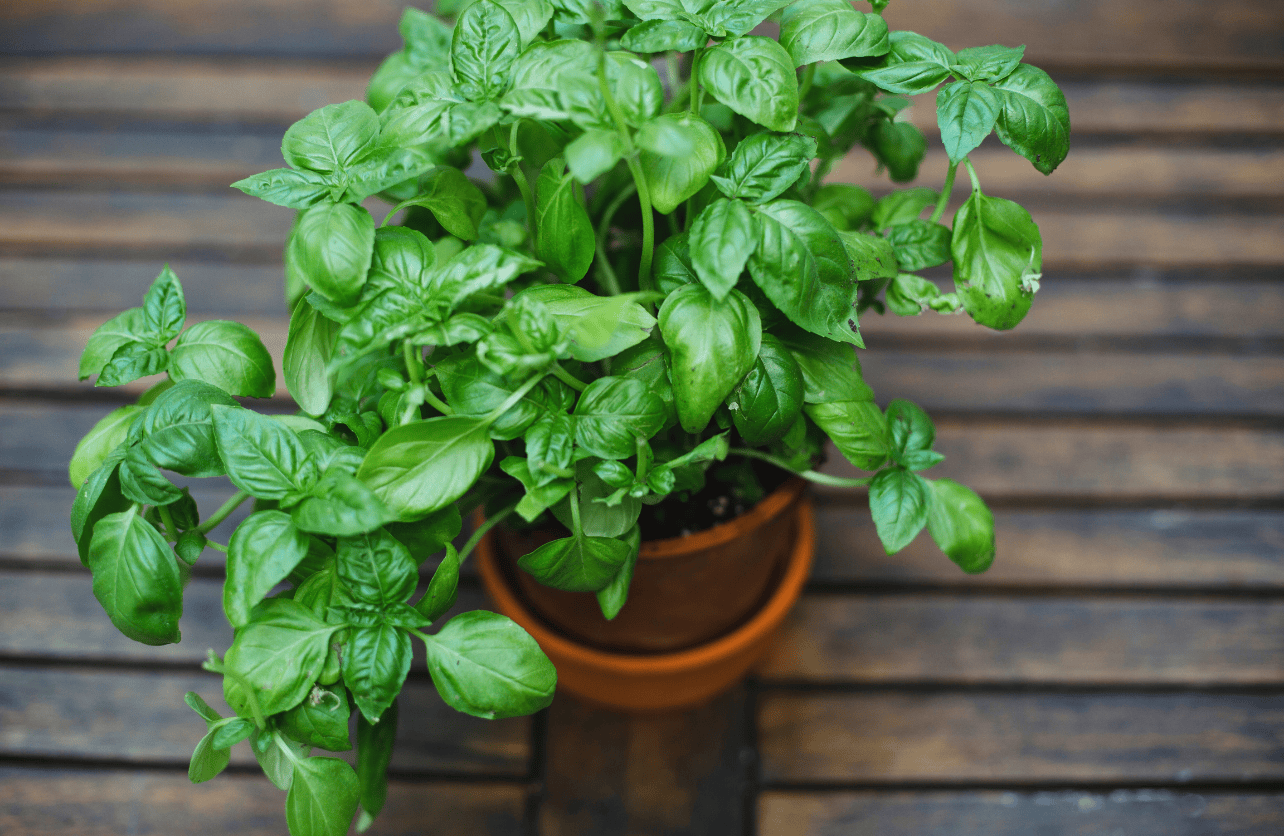
Basil, with its vibrant green leaves and intoxicating aroma, is a beloved herb in kitchens worldwide. Whether you’re an aspiring chef, a gardening enthusiast, or someone who simply enjoys the fresh taste of homegrown herbs, knowing how to grow basil can elevate your culinary creations and enhance your garden’s beauty. This comprehensive guide will walk you through the essential steps and best practices for cultivating healthy, robust basil plants, ensuring a steady supply of fresh, flavorful leaves year-round.
Why Grow Basil?
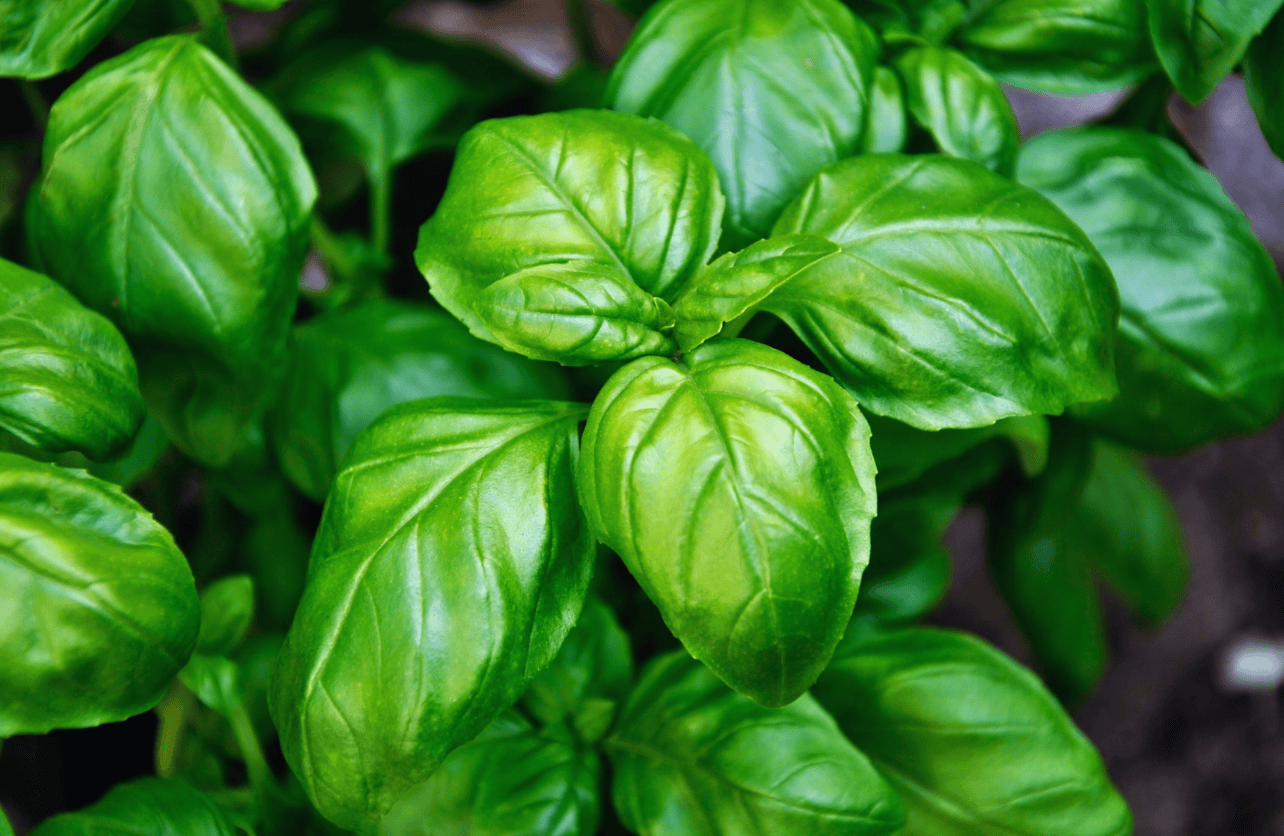
Basil isn’t just a versatile culinary herb; it also offers numerous health benefits and contributes to a thriving garden ecosystem.
Culinary Versatility
Basil is a staple in many dishes, from classic Italian pesto to refreshing salads and aromatic teas. Its distinct flavor profile makes it a favorite among home cooks and professional chefs alike.
Health Benefits
Rich in vitamins A, K, and C, basil also contains antioxidants and anti-inflammatory properties. Incorporating fresh basil into your diet can support overall health and well-being.
Garden Aesthetics
Basil’s lush green foliage and occasional flowers add beauty to your garden. Additionally, it can act as a companion plant, deterring pests and enhancing the growth of neighboring vegetables.
Ease of Growth
Basil is relatively easy to grow, making it an excellent choice for both novice and experienced gardeners. With the right care, basil can thrive in various environments and provide a rewarding gardening experience.
Types of Basil
Before diving into the growing process, it’s helpful to understand the different varieties of basil available:
1. Sweet Basil
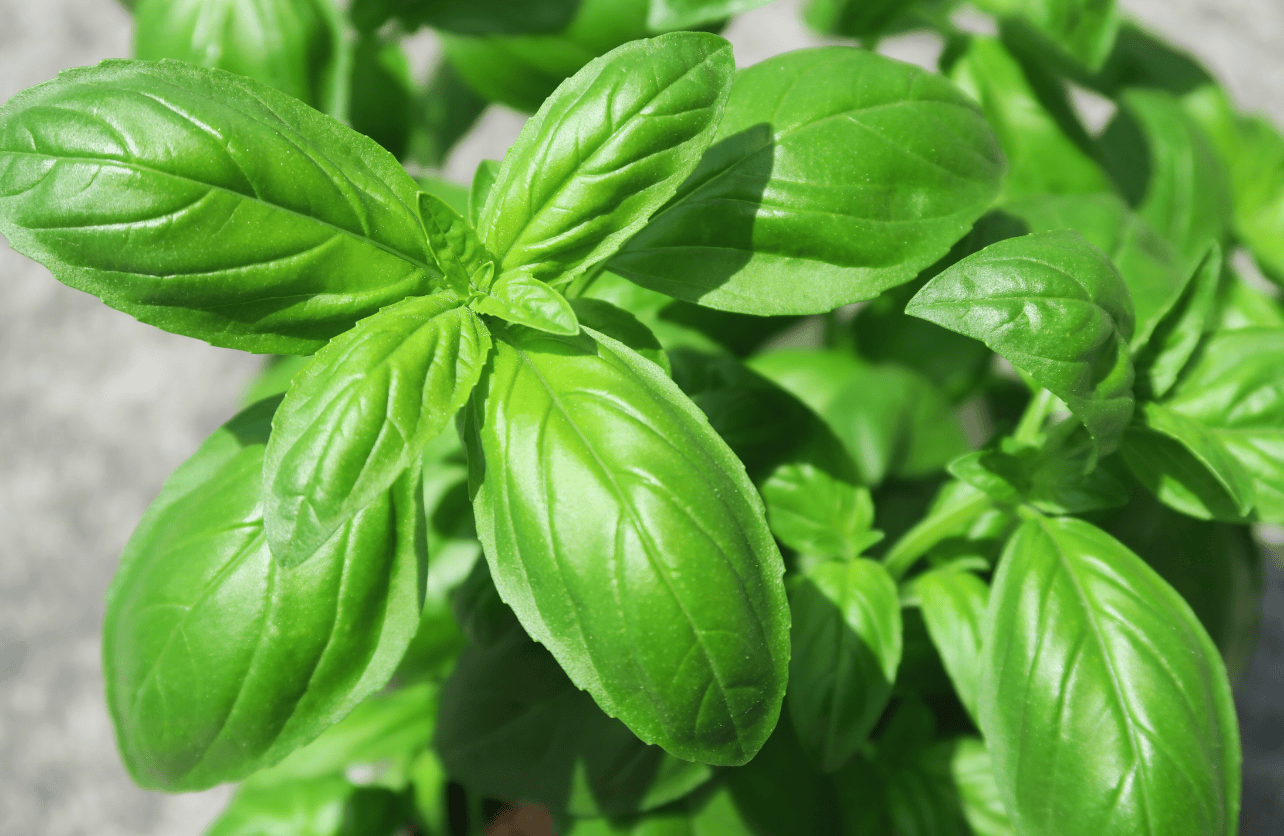
The most common variety, sweet basil is the go-to for Italian dishes like pesto. It has large, tender leaves and a sweet, slightly peppery flavor.
2. Genovese Basil
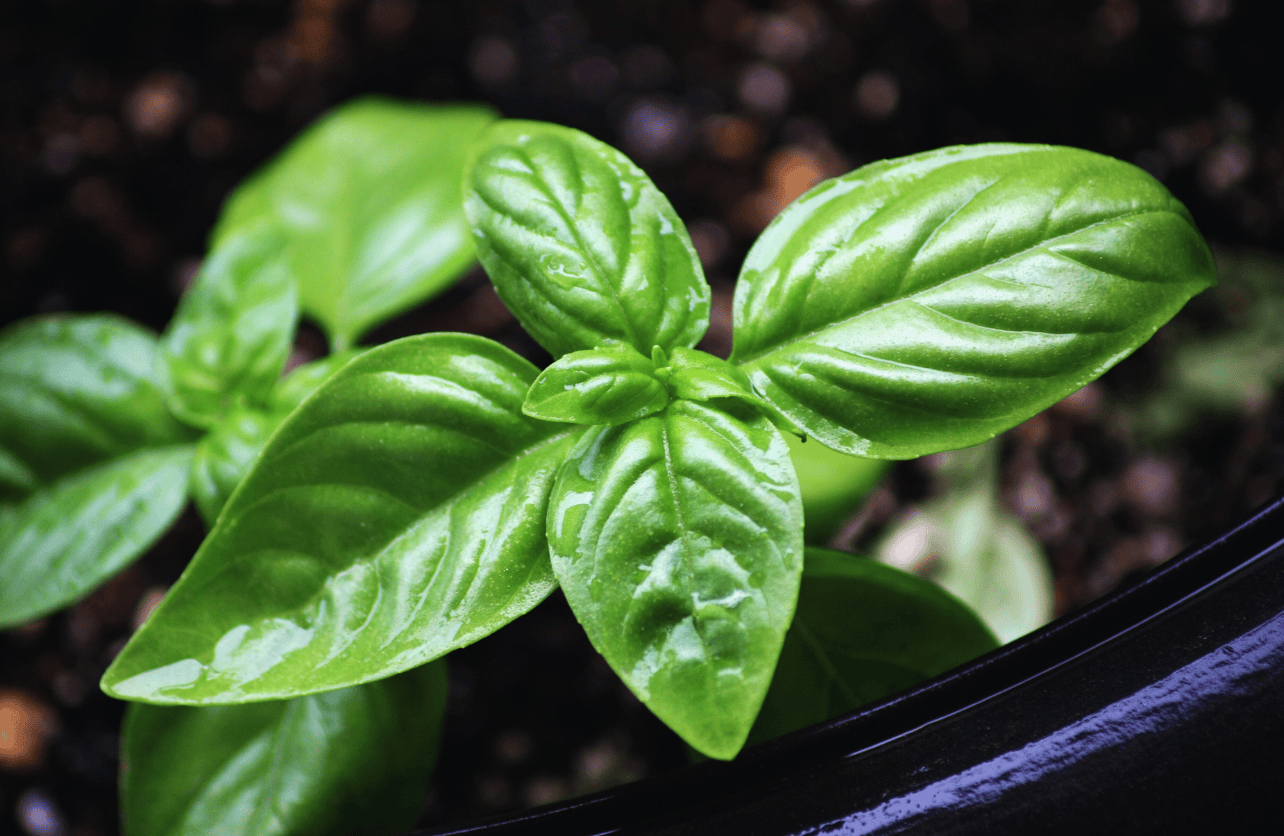
A type of sweet basil, Genovese basil is prized for its robust flavor and is often used in traditional pesto recipes.
3. Thai Basil
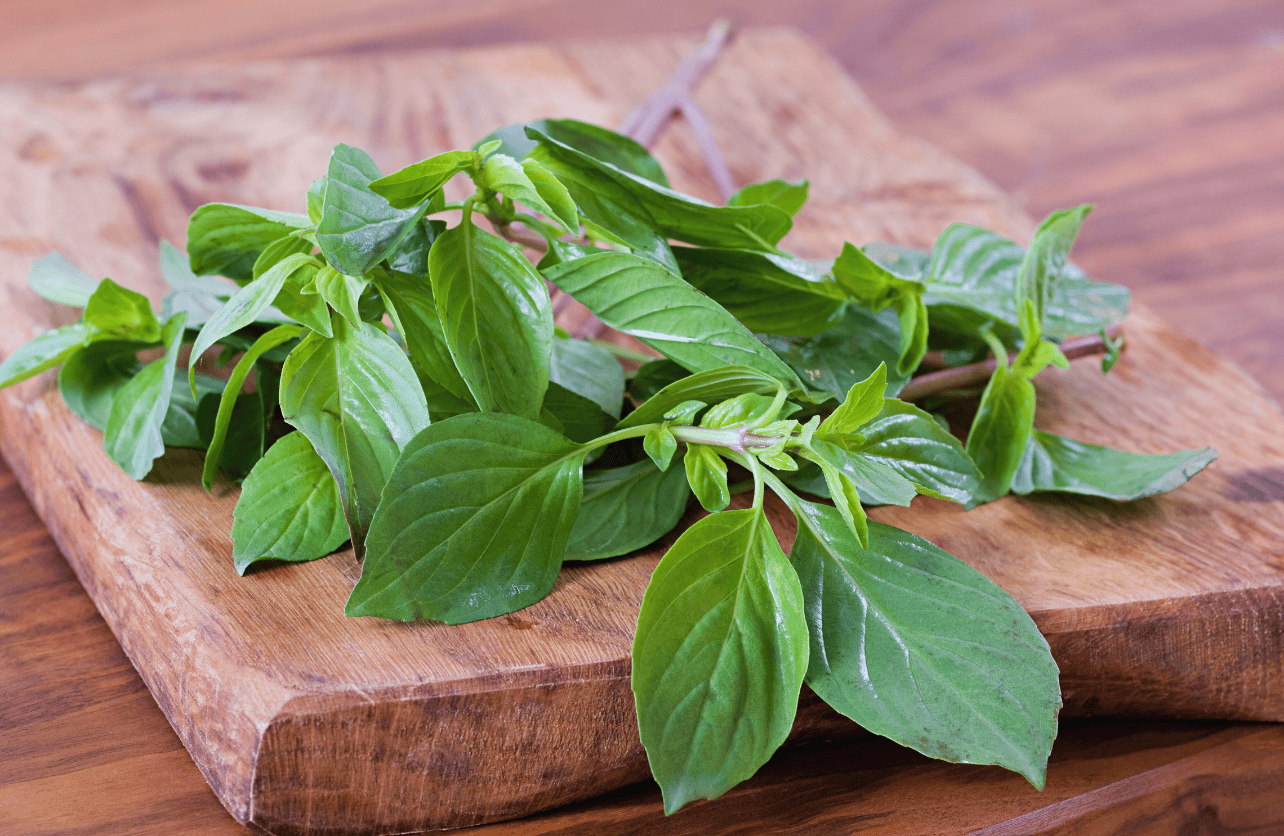
With a distinct licorice-like flavor, Thai basil is essential in Southeast Asian cuisines, particularly Thai and Vietnamese dishes.
4. Purple Basil
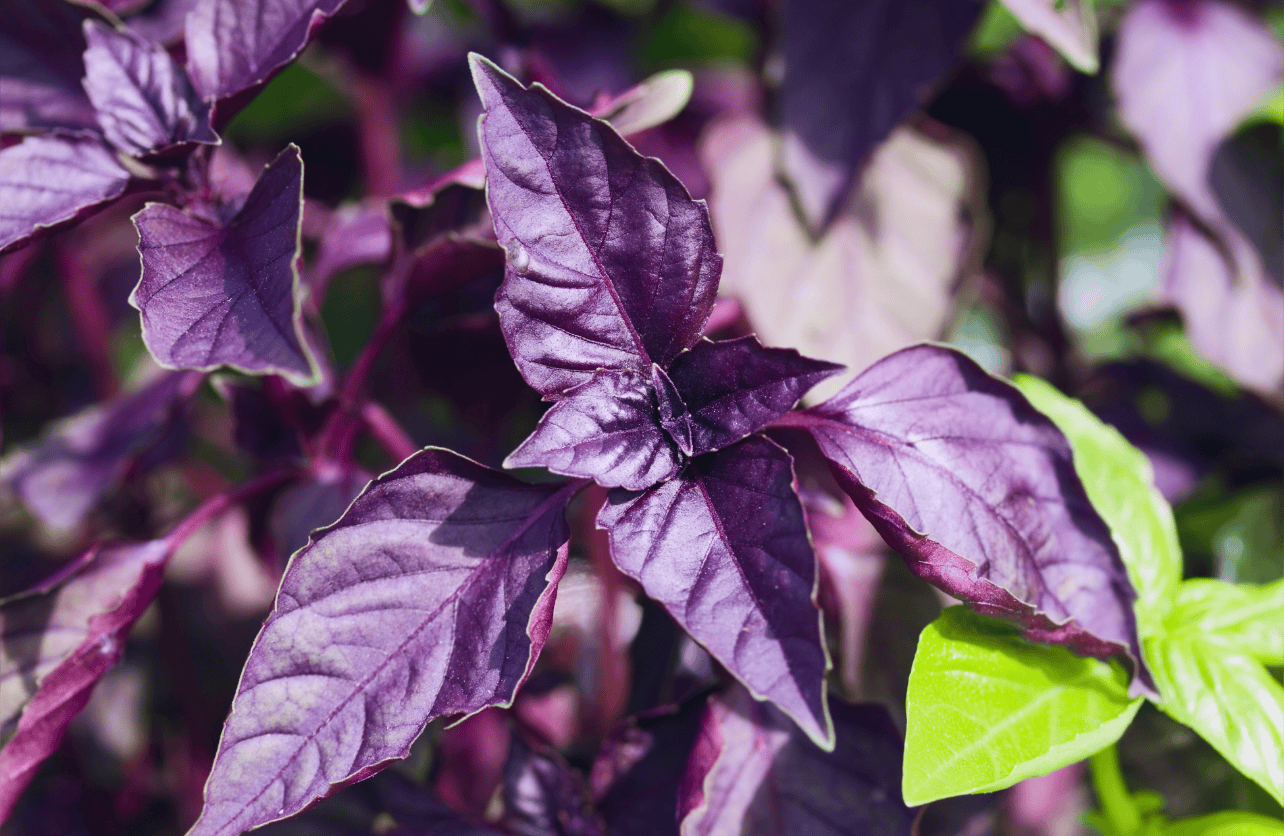
Known for its striking purple leaves, purple basil adds a splash of color to salads and garnishes. It has a slightly spicy flavor.
5. Lemon Basil
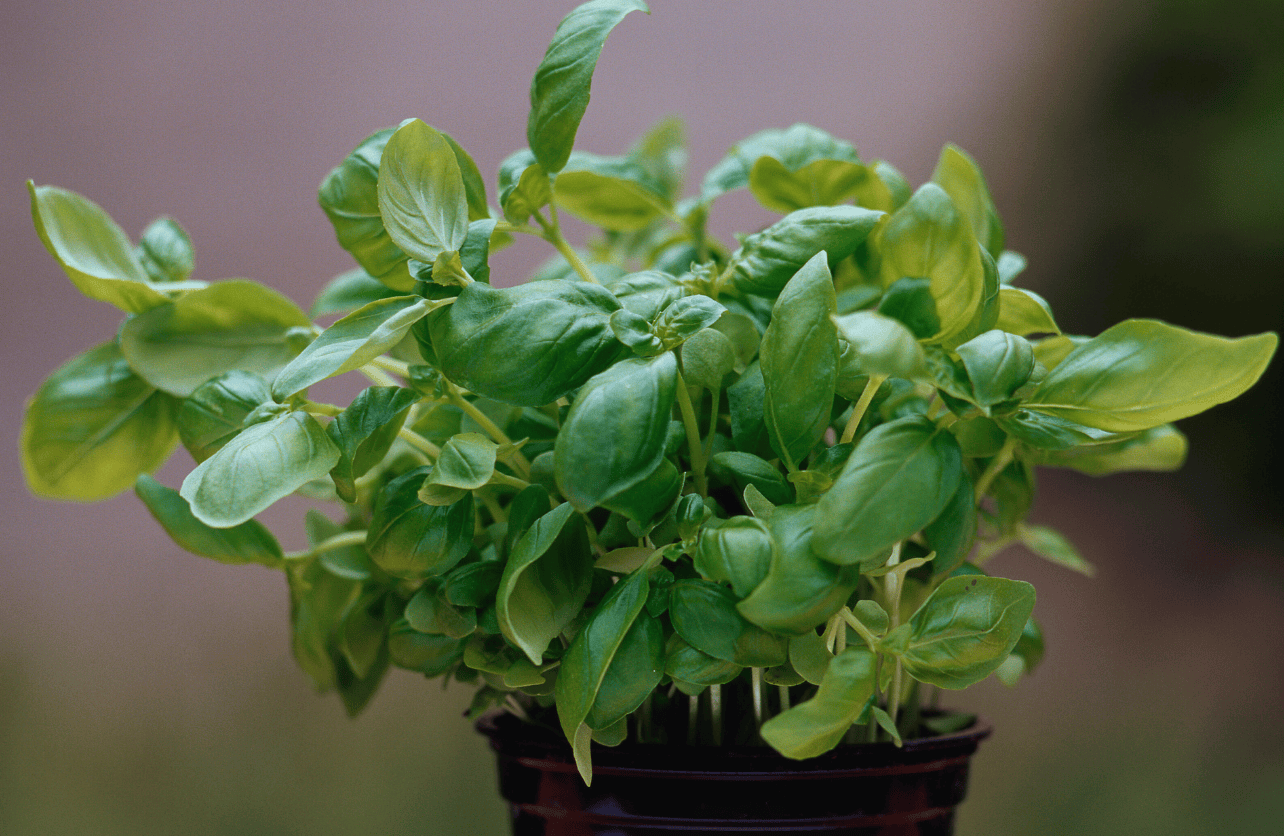
Infused with a citrusy aroma, lemon basil is perfect for adding a fresh twist to both savory and sweet dishes.
6. Holy Basil (Tulsi)
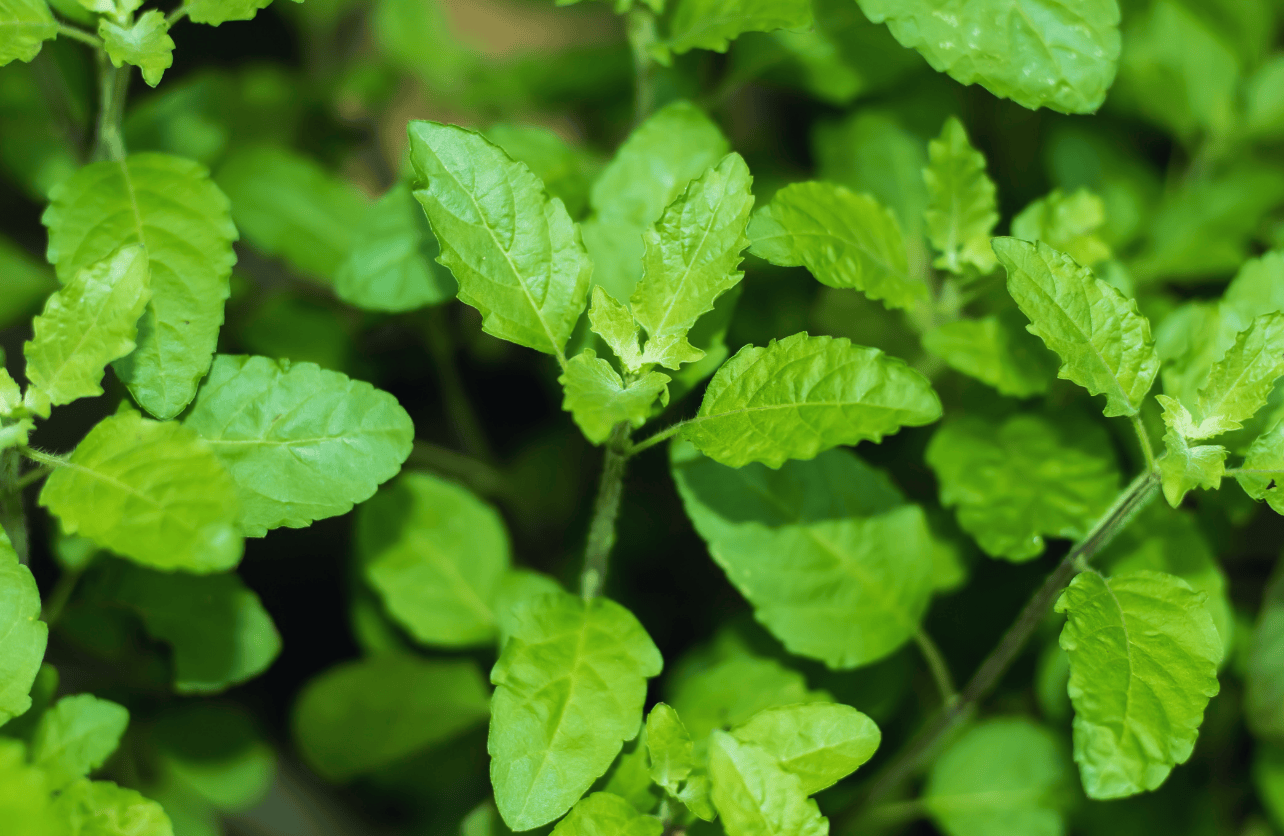
Highly regarded in Ayurvedic medicine, holy basil has a peppery taste and is used for its medicinal properties.
Best Growing Conditions for Basil
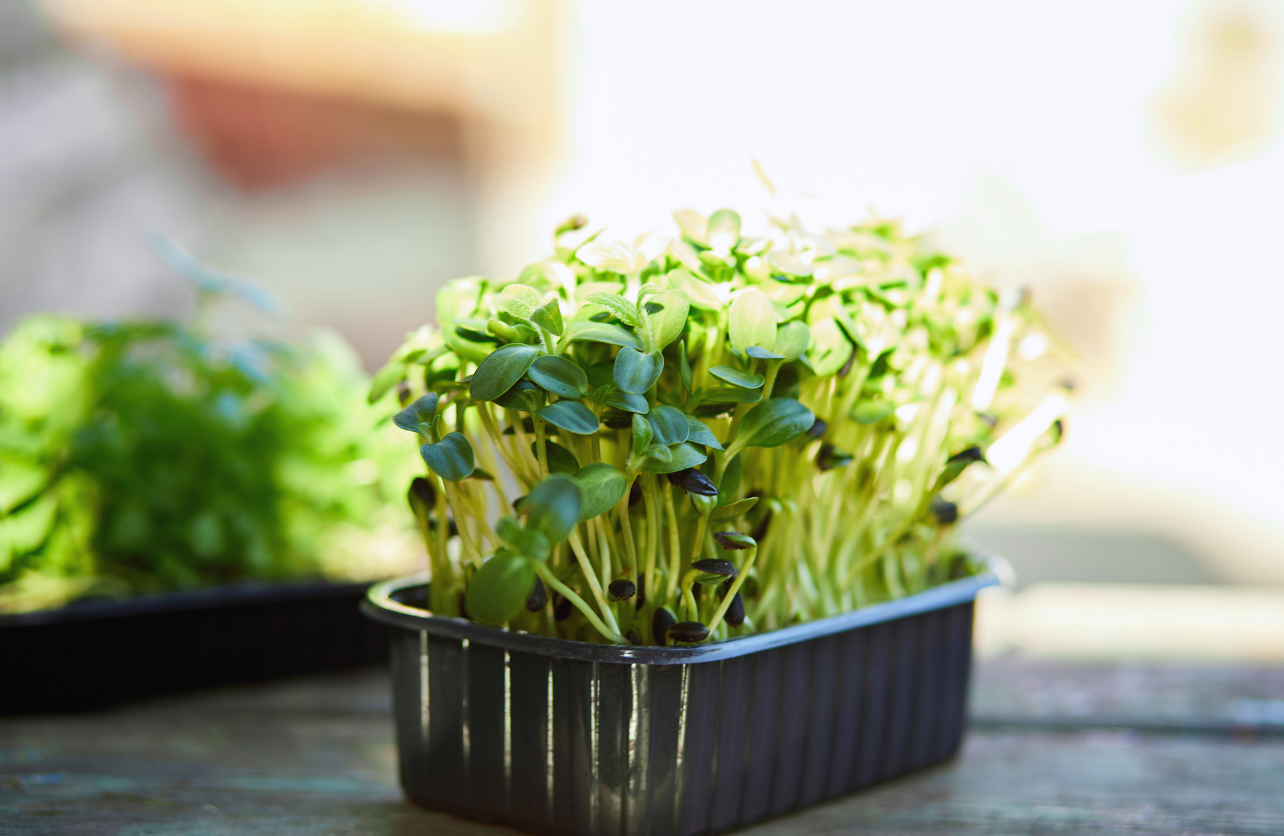
To ensure a thriving basil plant, it’s crucial to provide the right growing conditions:
Sunlight
Basil loves sunlight. Aim for at least 6 to 8 hours of direct sunlight each day. In regions with intense afternoon sun, some afternoon shade can prevent the plant from wilting.
Temperature
Basil thrives in warm conditions, ideally between 70°F and 90°F (21°C to 32°C). It’s sensitive to cold, so avoid planting it outdoors before the last frost in spring.
Soil
Use well-draining, nutrient-rich soil with a pH between 6.0 and 7.0. Incorporate organic matter like compost to enhance soil fertility and structure.
Spacing
Allow adequate spacing between plants to ensure good air circulation, reducing the risk of fungal diseases. Typically, basil plants should be spaced about 12 to 18 inches apart.
Step-by-Step Guide to Growing Basil
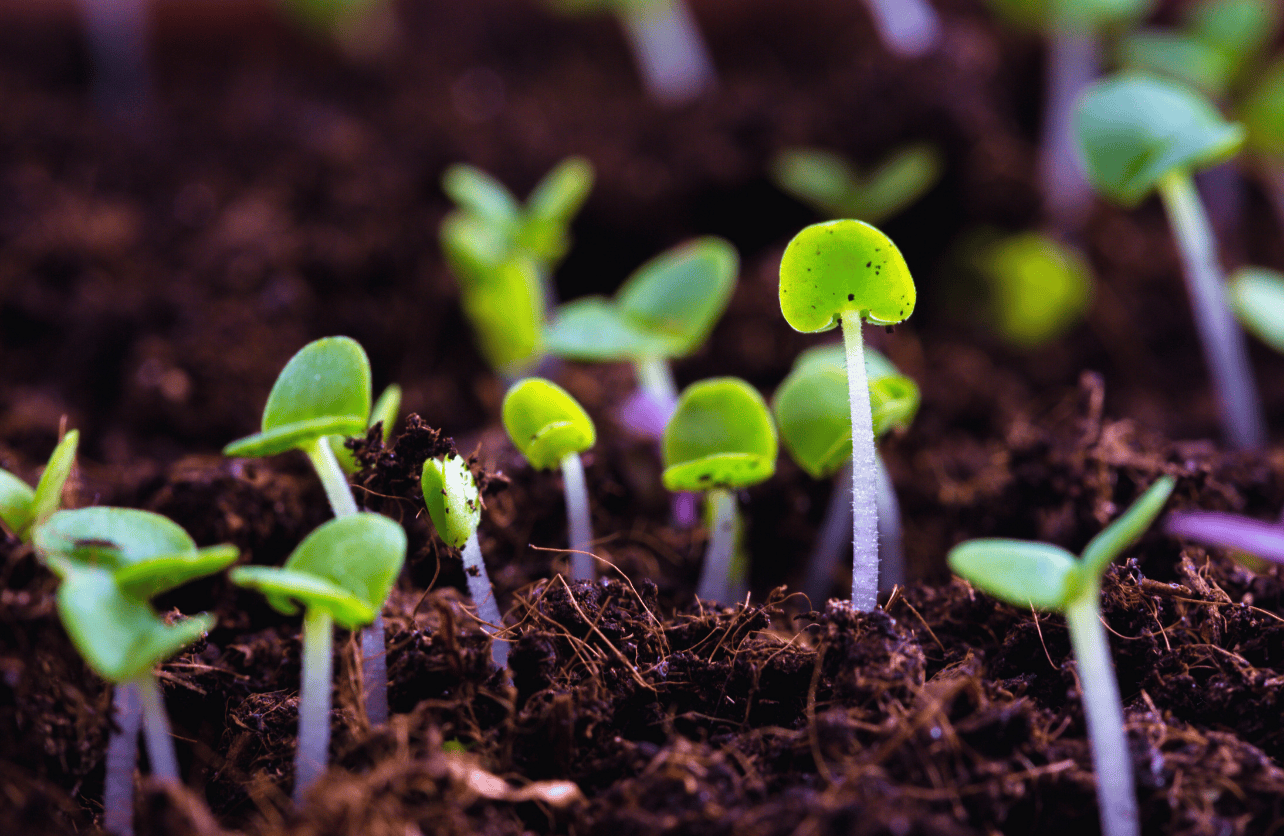
1. Starting from Seeds
Growing basil from seeds is a cost-effective and rewarding method.
a. Seed Selection
Choose high-quality basil seeds from a reputable supplier. Select varieties that suit your culinary needs and growing conditions.
b. Sowing Seeds
- Indoor Sowing: Start seeds indoors 6 weeks before the last expected frost. Use seed trays or small pots filled with seed-starting mix.
- Planting Depth: Sow seeds about 1/4 inch deep.
- Spacing: Place seeds 2 inches apart. Thin seedlings to about 12 inches apart once they sprout.
c. Germination
Keep the soil consistently moist but not waterlogged. Basil seeds typically germinate within 7 to 14 days in warm conditions.
2. Transplanting Seedlings
Once seedlings have developed 2-3 sets of true leaves and outdoor temperatures are consistently warm, it’s time to transplant them.
a. Hardening Off
Gradually acclimate seedlings to outdoor conditions over a week. Start by placing them outside for a few hours each day, increasing the duration daily.
b. Planting Outdoors
- Location: Choose a sunny spot with well-draining soil.
- Spacing: Transplant seedlings, spacing them 12 to 18 inches apart.
- Watering: Water thoroughly after transplanting to settle the soil around the roots.
3. Direct Sowing Outdoors
For gardeners who prefer not to start seeds indoors, direct sowing is an option once the danger of frost has passed.
a. Preparing the Soil
Ensure the soil is well-prepared with organic matter and has a pH between 6.0 and 7.0.
b. Sowing Seeds
- Depth: Sow seeds about 1/4 inch deep.
- Spacing: Plant seeds 12 inches apart to allow ample growth.
- Watering: Keep the soil moist until seeds germinate.
4. Watering and Fertilizing
a. Watering
Basil requires consistent moisture. Water the plants deeply when the top inch of soil feels dry. Avoid overhead watering to reduce the risk of fungal diseases.
b. Fertilizing
Feed basil with a balanced, water-soluble fertilizer every 4-6 weeks. Alternatively, incorporate compost or organic mulch to provide essential nutrients.
5. Pruning and Harvesting
Proper pruning encourages bushier growth and prevents the plant from flowering prematurely.
a. Pinching Back
Regularly pinch back the tips of the basil stems to promote branching. Start when the plant reaches about 6 inches in height.
b. Harvesting Leaves
- Method: Use sharp scissors or pruning shears to snip off leaves just above a set of leaves or a leaf node.
- Frequency: Harvest frequently, removing no more than one-third of the plant at a time to maintain health and productivity.
c. Removing Flowers
If flowers begin to form, remove them promptly. Flowering diverts energy from leaf production and can lead to a decline in flavor.
6. Pest and Disease Management
Basil is relatively hardy but can be susceptible to certain pests and diseases.
a. Common Pests
- Aphids: Small, sap-sucking insects that can stunt plant growth. Control with insecticidal soap or neem oil.
- Japanese Beetles: Scarab beetles that feed on leaves. Handpick or use traps to reduce their numbers.
- Whiteflies: Tiny, winged insects that excrete honeydew, attracting ants and promoting mold growth. Use yellow sticky traps or insecticidal treatments.
b. Common Diseases
- Downy Mildew: Causes yellowing and spotting on leaves. Ensure good air circulation and avoid overhead watering.
- Fusarium Wilt: A soil-borne fungal disease that causes wilting and yellowing. Prevent by using well-draining soil and rotating crops.
- Powdery Mildew: White, powdery spots on leaves. Improve airflow and reduce humidity around the plants.
7. Storing and Using Basil
a. Fresh Use
Use fresh basil leaves in salads, sandwiches, sauces, and as garnishes. For maximum flavor, add basil towards the end of cooking.
b. Refrigeration
Store fresh basil by wrapping the stems in a damp paper towel and placing them in a resealable plastic bag in the refrigerator. Use within a week for optimal freshness.
c. Freezing
To preserve basil long-term, freeze the leaves:
- Blanching: Briefly blanch leaves in boiling water, then transfer to ice water.
- Drying: Pat leaves dry with a paper towel.
- Freezing: Place leaves in airtight containers or freezer bags.
d. Drying
Dry basil by hanging bundles upside down in a well-ventilated, dark area until fully dry. Store dried leaves in airtight containers away from direct sunlight.
Tips for a Successful Basil Harvest
1. Harvest Regularly
Frequent harvesting encourages new growth and prevents the plant from becoming leggy. Aim to harvest every few weeks during the growing season.
2. Maintain Plant Health
Healthy plants are more productive. Ensure your basil receives adequate sunlight, water, and nutrients.
3. Companion Planting
Basil grows well alongside tomatoes, peppers, and oregano. Companion planting can enhance growth and deter pests.
4. Rotate Crops
To prevent soil-borne diseases, rotate basil with other herb or vegetable crops each season.
Common Harvesting Mistakes to Avoid
1. Overharvesting
Removing too much foliage at once can stress the plant and reduce its productivity. Stick to harvesting no more than one-third of the plant at a time.
2. Neglecting to Remove Flower Buds
Allowing basil to flower can lead to a decline in leaf quality and flavor. Regularly remove any emerging flower buds.
3. Using Dirty Tools
Dirty scissors or shears can spread diseases. Always use clean, sharp tools to make precise cuts.
4. Ignoring Pest Signs
Unchecked pests can cause significant damage. Monitor your plants regularly and address pest issues promptly.